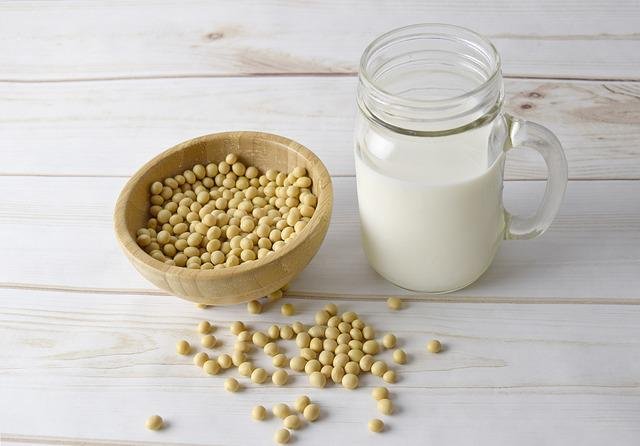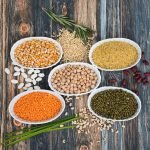
Homemade soy milk is tastier and less adulterated than commercially available, as well as being cheaper. Let’s see its properties, use and the recipe to prepare it.
Soy milk is obtained by cooking and filtering the seeds contained in the leguminous fruit Glycine max, an annual herb native to China and belonging to the Fabaceae family, the same as chickpeas, lentils, beans and peas.
Soy milk is a variety of vegetable milk that is used in place of cow’s milk by those who have chosen to follow a vegan diet and not only; in fact, soy milk does not contain lactose and cholesterol and can therefore also be consumed by those suffering from lactose intolerance or by those with too high levels of cholesterol. Soy milk clearly does not contain gluten, so it can also be taken by celiacs.
Compared to cow’s milk, soy milk provides the body with lower amounts of calcium; for this reason, during the preparation, as we will see, the kombu seaweed, rich in calcium, is added during the cooking phase.
Soy milk: properties and nutritional values
Yellow soybeans are used to prepare soy milk. Soybeans contain 35-40% protein, as well as lipids and fibers; these proteins, taken to replace those of animal origin, are able to lower the levels of triglycerides and cholesterol in the blood.
In addition, soy milk is less fat and has fewer calories than cow’s milk. Worthy of note are the isoflavones contained in soybeans: these have estrogenic activity and seem to be able to reduce the incidence of hormonal diseases, manifestations of menopause and osteoporosis and carcinogenesis of the breast and prostate.
Soy milk: recipe for making it at home
Soy milk can be found both in shops that sell organic products and in the supermarket but it is possible to prepare it at home, using, as already mentioned, yellow soy. Let’s see what soy milk is used for and how to prepare it.
INGREDIENTS FOR 2 LITERS OF MILK
- 200 grams of yellow soybeans, preferably organic
- 2.5 liters of water, for soaking and cooking
HOW TO PROCEED
- First, rinse the soy beans and soak them for twelve to twenty-four hours covered with water.
- After the time necessary for soaking, drain and rinse the beans and remove the “peels”; to do this, place the beans in water and mix them with your hands, so that the skin comes to the surface.
- Bring just over two liters of water to a boil in a large pot. When the water has come to a boil, pour a few ladles over the soy beans and start blending with an immersion blender. Continue to add water little by little and blend until you get a homogeneous puree.
- Transfer the mixture to the pot, where there will be some water left; lower the heat and cook over low heat for about a quarter of an hour, stirring constantly, until you no longer notice foam on the surface.
- During cooking, sugar, salt, vanilla, cinnamon can be added depending on the use you plan to make of the milk. You can also add kombu seaweed , which is useful for increasing the calcium intake.
- Turn off the heat and let the mixture cool. Then filter it a little at a time with a cotton cloth and a large sieve, to separate the milk from the okara, the undissolved part of the soy. Squeeze the towel well to let out all the milk, which you will collect in a container placed under the strainer.
- Transfer the milk to one or more glass bottles to keep in the refrigerator for up to a week.
With these doses, about two liters of soy milk and about 200 grams of okara are obtained; do not throw away the okara as this can be used to prepare meatballs, vegetable burgers or added to the mixture of sweet and savory preparations.
Use of soy milk
Soy milk can be consumed plain or with the addition of sugar and cocoa instead of cow’s milk at breakfast or during the day, both cold and hot.
Sweetened or flavored, it is used to make desserts, in the dough of cakes, biscuits, crêpes and in recipes for creams and puddings or to prepare vegetable yogurt or smoothies.
In the natural version it is an excellent base for the preparation of cream, béchamel, mayonnaise-like sauces, vegetable yogurt, tofu and alternatives to margarine.






